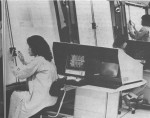 I just put up a blog about the EDA interoperability forum, much of which is focused on standards. Which reminded me just how long-lived some standards turn out to be.
I just put up a blog about the EDA interoperability forum, much of which is focused on standards. Which reminded me just how long-lived some standards turn out to be.
Back in the late 1970s Calma shipped workstations (actually re-badged Data General minicomputers) with a graphic display. That was how layout was done. It’s also why, before time-based licenses, EDA had a hardware business model, but that’s a story for another day. The disk wasn’t big enough to hold all the active designs, so the typical mode of operation was to keep your design on magnetic tape when you weren’t actually using the system. Plus you could use a different system next time rather than having to get back on the same system (this was pre-ethernet). The Calma system was called the graphic design system and the second generation was (surprise) labeled with a two. That tape backup format was thus called “graphic design system 2 stream format”. Or more concisely GDS2. Even today it is the most common format for moving physical layout design data between systems or to mask-makers, over 30 years
Read more…
